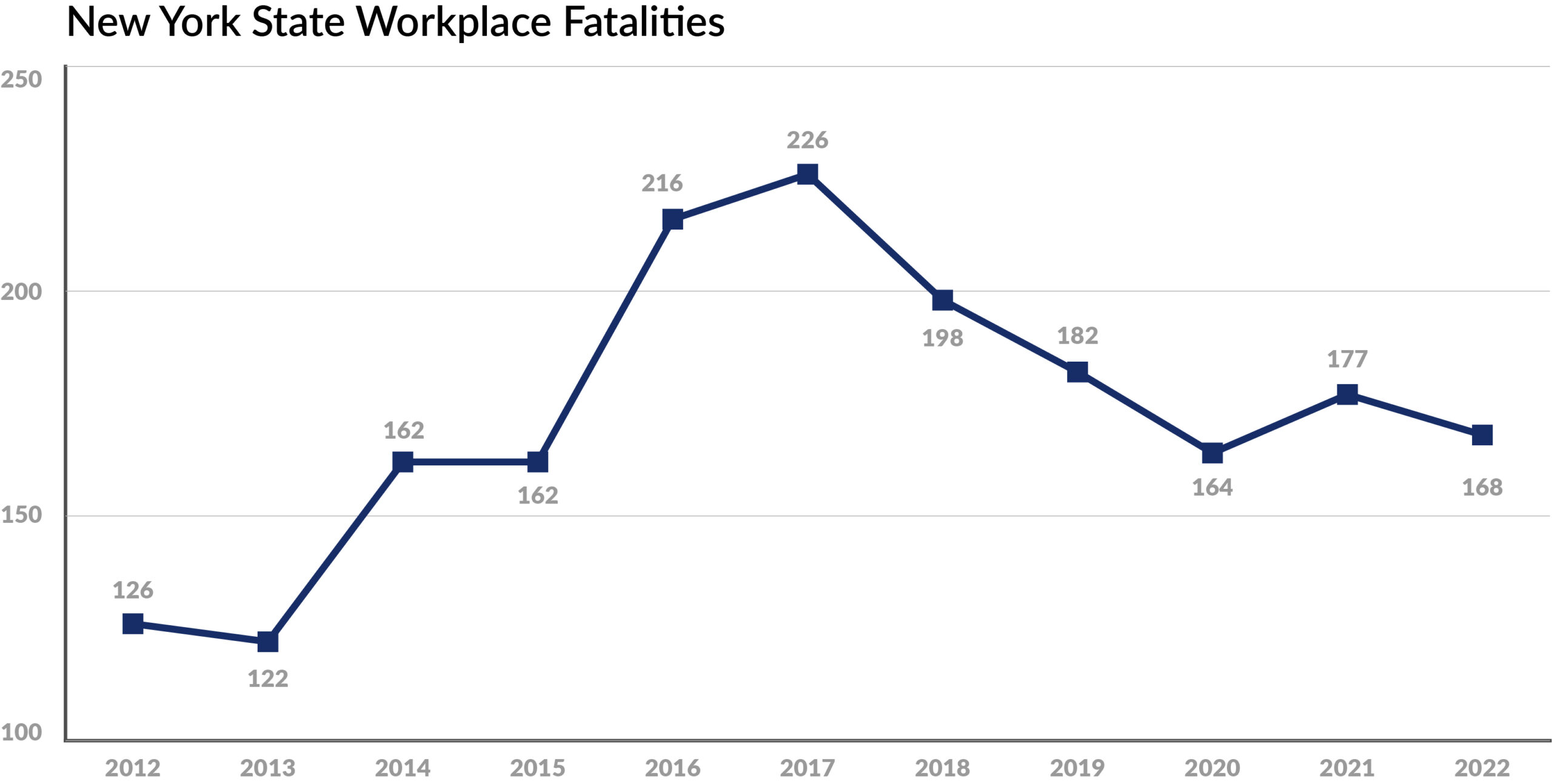Recently, the Bureau of Labor Statistics released new information about the number of fatal work place injuries that occur every years in the United States. A sharp 5.7% increase from 5,190 to 5,486 was recorded between 2021 and 2022, with 3,7 out of 100,000 full-time equivalent workers losing their life at work.
This trend was not reflected in New York State between 2021 and 2022, but workplace fatalities in the state have increased by 33% from 2012 (126) to 2022 (168):

| 2012 | 2013 | 2014 | 2015 | 2016 | 2017 | 2018 | 2019 | 2020 | 2021 | 2022 |
|---|---|---|---|---|---|---|---|---|---|---|
| 126 | 122 | 162 | 162 | 216 | 226 | 198 | 182 | 164 | 177 | 168 |
There are four areas of the law that protect workers and can provide compensation after an accident:
- OSHA (Federal Government)
- The NYS Department of Labor and NYS Industrial Code
- Workers Compensation
- Personal Injury Law
Is a workplace fatality covered by Workers’ Compensation or Personal Injury Law in New York State?
The two most common ways for families to recover damages after the tragic loss of a loved one in a workplace accident are workers’ compensation and personal injury law. Each is applicable in a range of situations, and if you are unsure about which is right for you, contact us at 845-600-0000 for a free personal injury consultation at our offices in Kingston, New Windsor or Poughkeepsie, NY.
Statute of limitations: Keep in mind, the clock is ticking after a workplace accident. You must notify your employer of the accident within 30 days to be eligible to receive workers’ compensation later. Once again, contacting an experienced personal injury lawyer will help you navigate these decisions and deadlines.
Workers’ Compensation
Workers’ compensation is a no-fault option for victims and their families to receive compensation after a workplace accident. That means that no matter who caused the accident, the employee is entitled to compensation. Some of the requirements include:
- Employer-employee relationship: the victim must be an employee of the company when the accident occurred; independent contractors and gig workers typically are not included in this
- On-the-job injury: The injury or condition must have been incurred when the employee is performing their job duty or because of their job.
- Medical records: The burden of proof is on the victim to get the test results, x-rays and doctor examinations
Personal Injury Claim
A personal injury claim can be filed when an individual is injured due to the neglience of another. In this case, it would be the provable negligence of the employer or another party that was responsible for the accident or injury. There are four requirements to meet to have a successful personal injury claim:
- Demonstrating a duty of care: The party that is injured must prove that the responsible party had a duty of care toward them. For example, the owner of a parking lot has a duty to provide a safe environment for people and their vehicles parking there, and warn of any temporary lapses in that environment.
- Breach of Duty: The plaintiff must prove that the other party breached the aforementioned duty of care, through sheer negligence and/or a failure to act.
- Causation: The plaintiff must then show a linkage between the responsible party’s breach of duty and any injuries or fatality suffered.
- Damages: The plaintiff then must prove that actual damages were suffered, including but not limited to medical bills, lost salary and pay, pain and suffering, and other significant losses that were caused by the injury.
How to Proceed
Every situation is different and delicate. In some cases, it may be appropriate to pursue both Workers’ Compensation AND a personal injury claim. But the first step is to receive legal counsel, because no matter what your circumstances are, there is an optimal legal route that we can pursue. Call 845-600-0000 to schedule your free consultation today.

